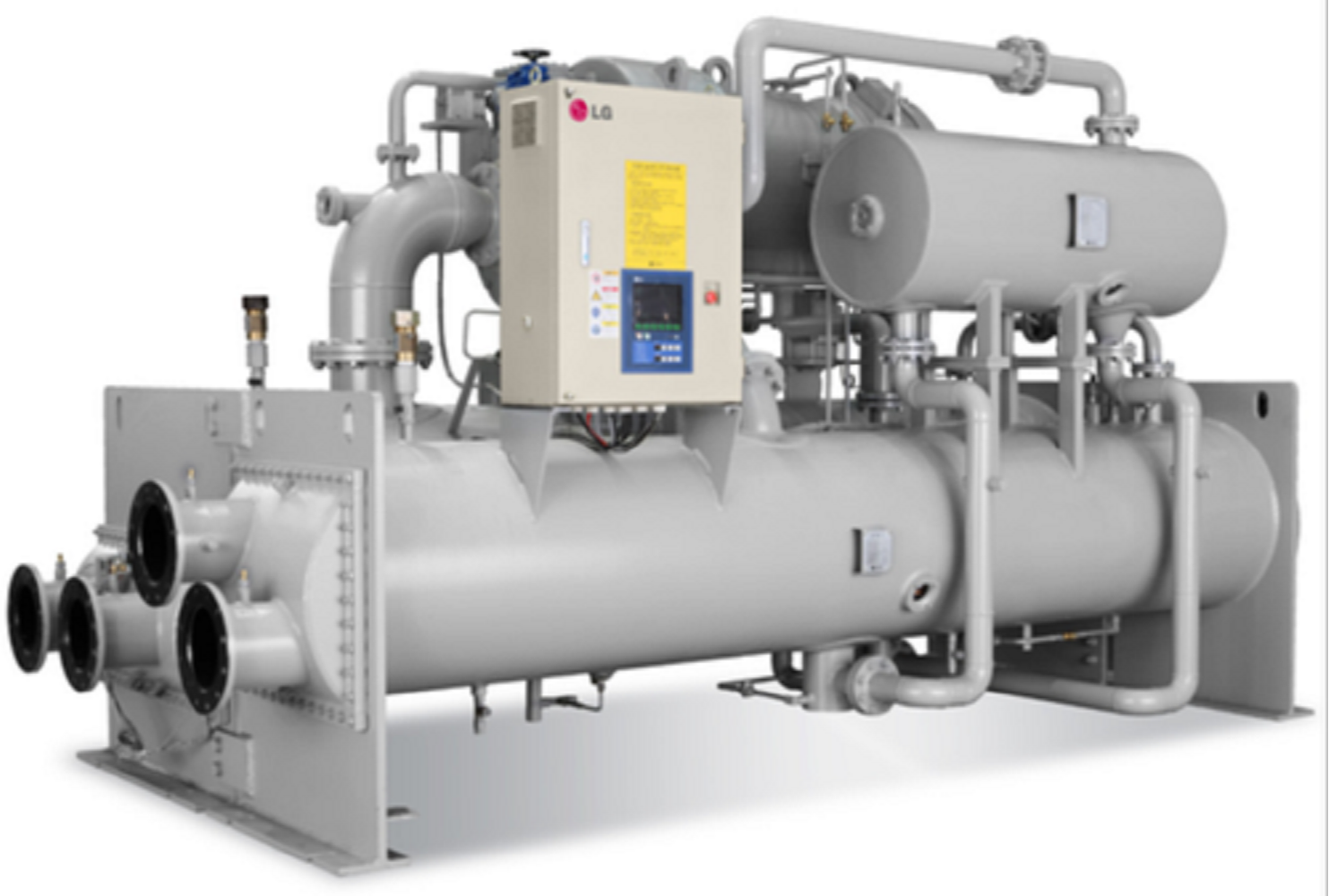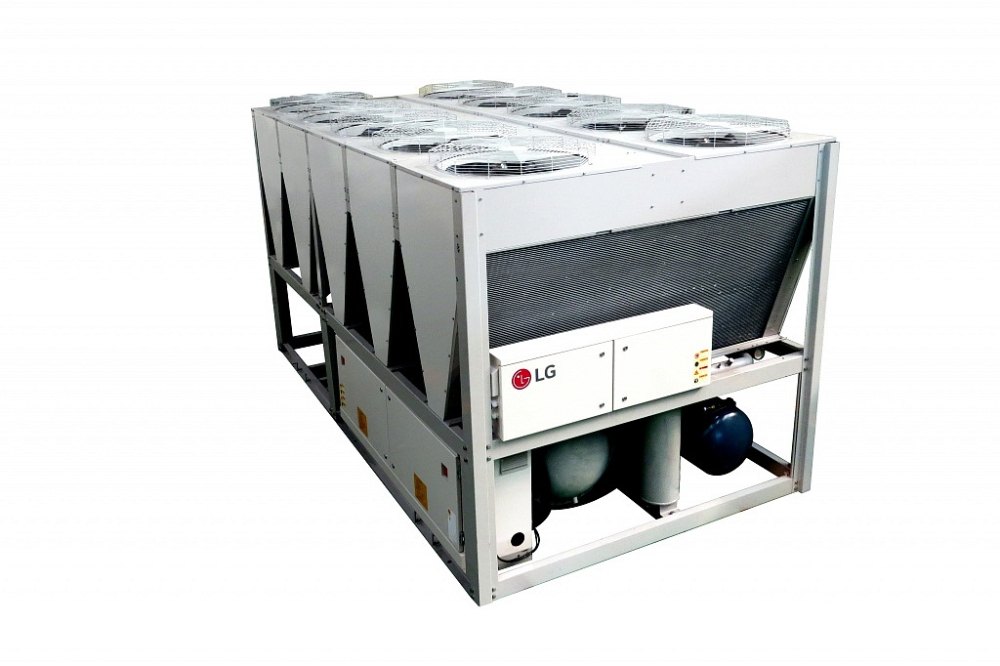Chiller System
A chiller is a machine that removes heat from a liquid via a absorption refrigeration, or absorption refrigeration cycles. This liquid can then be circulated through a heat exchanger to cool equipment, or another process stream (such as air or process water). As a necessary by-product, refrigeration creates waste heat that must be exhausted to ambience, or for greater efficiency, recovered for heating purposes. Vapor compression chillers may use any of a number of different types of compressors. Most common today are the hermetic scroll, semi-hermetic screw, or centrifugal compressors. The condensing side of the chiller can be either air or water cooled. Even when liquid cooled, the chiller is often cooled by an induced or forced draft cooling tower. Absorption and adsorption chillers require a heat source to function.
Types of Chillers
1. Water-Cooled Chillers

A water-cooled chiller pulls water into an evaporator through a primary return. The evaporator transfers heat from the water to a refrigerant, chilling the water before sending it through the primary supply to the system’s water tank. A water pump then distributes chilled water to climate-controlled spaces. As the chilled water flows through each space and reaches the air handler, it absorbs ambient heat. The second law of thermodynamics, which states that heat naturally flows from higher-temperature regions to lower-temperature regions, makes this heat transfer possible.
If this is an air conditioning application, after the heat transfers to the chilled water, the air inside the air handler cools down. A fan forces the air through ductwork and into each space, cooling the equipment’s climate-controlled areas. When the warm water returns to the system’s chiller, it cools again and repeats the process.
2. Air-Cooled Chillers

An air-cooled chiller operates similarly to a water-cooled chiller. The only difference between and Air Cooled & Water Cooled chiller is in the condenser section of the units. And air cooled chiller utilizes an air-over condenser coil to remove heat from the refrigerant while the water cooled chiller uses a water to refrigerant condenser coil. The way each chiller removes heat from the process remains the same. The refrigerant then increases its temperature and pressure by moving through the compressor until it reaches the condenser where outside air circulates from a fan. The condenser absorbs the refrigerant’s heat and expels it into the surrounding air. Finally, the refrigerant returns to the evaporator through the expansion valve to begin the process again.
Increased efficiency
Water transfers heat more effectively than air, so water-cooled chillers operate more efficiently than air-cooled chillers.
Greater consistency
Water’s ability to transfer heat more effectively than air allows water- cooled chillers to operate more consistently.
Longevity
Water-cooled chillers typically last longer than air-cooled systems.
Requires water treatment
The Cooling Tower on a water cooled chiller system requires water treatment, filtration, and continuous water make-up.
